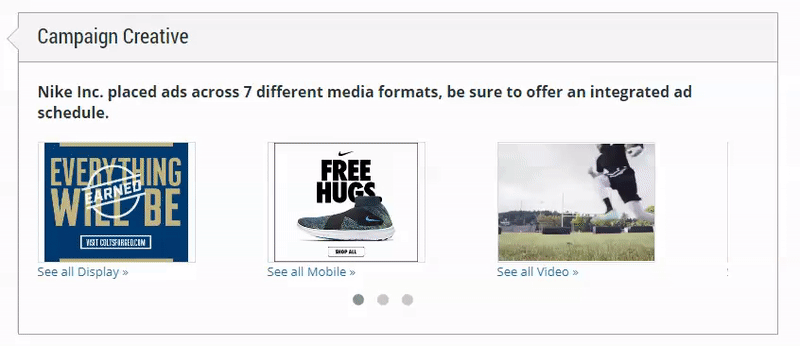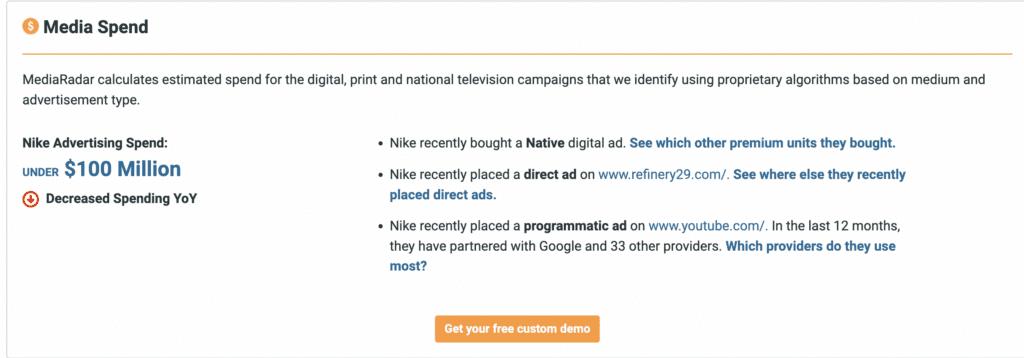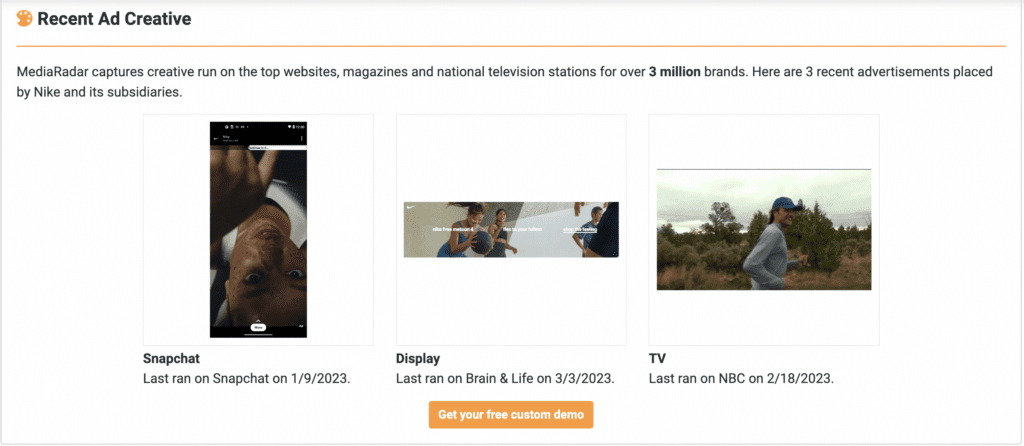Do you want to win new clients for your agency? Of course, you do, but how does that happen?
Not on a whim, that’s for sure.
Every successful agency-client relationship is built on a foundation of understanding.
However, reps must research and prepare to understand their prospects to build these relationships.
In the pre-pitch stage, this process is known as prospecting.

What Is Sales Prospecting?
Prospecting is initiating and developing business by looking for potential customers who meet your ideal customer profile (ICP). Prospecting aims to engage in conversations, nurture a prospect down the funnel, and ultimately turn them into closed-won revenue.
Why Is Prospecting Important?
Prospecting is your first interaction with a brand if you’re an agency development rep. It’s an opportunity to prove that you’re a student of their business and fully invested in being their partner.
At the same time, prospecting makes sure you’re maximizing your time, talking to the right people, and engaging with those who have the potential to turn into closed-won revenue.
Unfortunately, prospecting can sometimes be very time-consuming. In fact, top sellers spend an average of 6 hours per week researching prospects.
Arming yourself with the right prospecting tools and knowing which questions to ask can make understanding potential clients much easier and less time-consuming.
What to Look for When Prospecting
Let’s say you have your sights set on Nike.
To understand Nike and maximize your relationship with your prospect, it’s important to ask the right questions:
What ad formats do they use?
Does Nike advertise on TV? What about print?
Believe it or not, Nike has historically placed ads across many media formats, including print, display, mobile, video, native, email, and TV.
Offering a cross-platform advertising package could be the key to winning the business.
At the same time, ask yourself if it’s also investing in more emerging ecosystems like OTT and TikTok. If the company hasn’t invested in social media ads—or hasn’t, ask yourself why?
Is it because they don’t believe there’s audience alignment?
Is it because the ads are becoming too expensive compared to alternatives?
Are the ad loads too much?
Which ad formats are advertisers using to embrace the DTC model?
Since 2011, Nike has increased direct-to-consumer sales from 16% of brand revenues to 35%.
Determine which ad formats they use—and which ones they don’t—and craft a pitch that’ll resonate with the prospect and get them thinking about how you can help them take their strategy to the next level.
 |
How much do they advertise?
Knowing a brand’s ad spend and the number of ads placed tells you about its ad strategy.
For example, Nike actually decreased ad spending in the last 12 months, despite revenue increasing by 6.05%.
Which corners of the advertising world did they stop spending in?
Did they move away from TV, given their embrace of digital-first DTC audiences?
Have advertisers reduced spending on display ads in preparation for the downfall of third-party cookies?
Fluctuations in ad spend may signify an altered marketing strategy within the company or perhaps a lack of return on investment.

If you can provide tangible proof of return on different ad formats, you could win that share of wallet.
Where do they advertise?
What TV networks, print and online publications do Nike typically advertise with?
This will tell you a lot about which demographics it’s trying to reach. The ability to target the right audience can be a deal-maker or even a deal-breaker for a brand.

What kind of ad creative do they run?
Study your prospect’s past creative to get a feel for their design and layout preferences across platforms.

Leading up to the 2022 FIFA World Cup, Nike FC released a campaign titled “Footballverse” that featured some of the best players and showed consumers how they’d match up against old-school legends—and it all happened in a parallel universe.
What agencies do they work with?
Find out who Nike currently works with.
Do they have an agency specifically for creative, TV, or digital?
Do they have an agency for each?
In 2022, Nike wrapped up its global media review by selecting two new agencies: IPG Mediabrands’ Initiative to handle media globally and in the EMEA and APLA regions, and PMG to run integrated media.
According to a source, the account is worth approximately $1 billion, with a good chunk of that going to Nike’s push into DTC.
Can you provide a better service or fill a blind spot in Nike’s strategy?
Combine this with advertising insights to see how you fare against your competitors.
Who should I talk to?
Once you’ve gained a full understanding of how your prospect advertises, it’s important to understand their people.
Research who the decision makers are within the company and who to talk to regarding different aspects of their business.
And remember, there may be a group of people you need to connect with—the typical buying group for a complex B2B solution includes between 8 and 10 people.
For example:
- Are you a digital creative agency? Find Nike’s director of digital partnerships.
- Are you an international agency looking to work in new markets? Reach out to Nike’s Senior Marketing Director for Emerging Markets
- Are you an integrated agency? Reach out to the person who selected PMG.
MediaRadar users have access to recently verified contact information that allows reps to directly connect with decision makers by phone, email, or social media, and find local information to plan convenient meetings.
Prospecting the Right Way with MediaRadar
MediaRadar helps you better understand prospects by providing the data needed to learn about them and the insights to make that data actionable—and the benefits are impossible to ignore.
Benefits of ad sales intelligence tools
So, what are the benefits of ad sales intelligence tools?
The list is long, but here are the highlights:
- Identify your point of contact: Ad sales intelligence platforms help you prospect for new business and connect with the right people. They issue reports on spending and allow you to uncover opportunities. With these insights, you can determine if this person is in your ICP and reach out.
- Insights on when to reach out: You can get insights on brand media planning and buying periods, which can help you stay on top of upcoming RFPs. This will allow you to proactively plan and craft a pitch that will truly resonate.
- Context for the perfect pitch: Tools give you information on spending data, insights into cross-channel spending, and greater industry insights. Rather than using multiple tools or doing countless hours of manual research, you can find all this information in one place.
- Leverage existing relationships: You can see who holds buying power (now and in the past) and use that information to write a compelling cold email.
- Outperform the competition: You can only gain an advantage over your competition when you have accurate, trustworthy, and recent data. These tools give you that.
How can you ensure you pick the right ad sales intelligence tool?
Ask yourself 5 questions:
- Can I trust the information provided? Do you know where the company sources the data? What about how often they update it?
- Is the tool easy to use and understand? You can have the most powerful ad sales intelligence tool, but if it’s hard to use—or impossible to decipher the data—you won’t use it (or use it as intended).
- Does the vendor take data privacy seriously? Ask the vendor if they are a US Privacy Shield Program (US version of the EU’s GDPR) Participant. Additionally, determine if they comply with the California Consumer Privacy Act (CCPA).
- Can I customize the platform? Figure out if the tool can be tailored to your needs and goals. Can you engage in personalized prospecting and filter the tool by factors and variables that matter to you?
- Is the vendor a partner? Ask the vendor if they’re truly invested in your success or if they will disappear after onboarding. At MediaRadar, for example, every customer has a dedicated, personalized account management team.
A reliable ad sales intelligence tool allows you to identify and pursue high-priority opportunities. Make your perfect pitch with relevant data and a team supporting you all the way.
For more insights, sign up for MediaRadar’s blog here.



